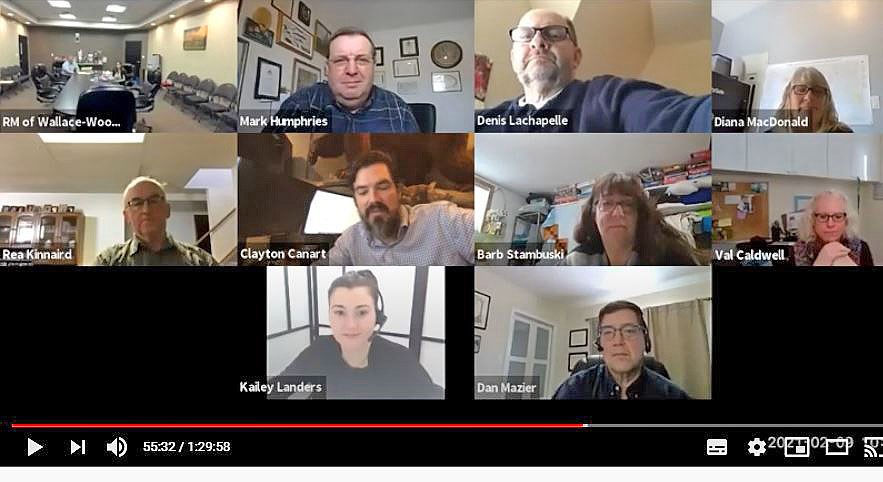For ratepayers in the R.M. of Wallace-Woodworth beset by spotty, unreliable communications, relief may be on the way.
Dan Mazier, Member of Parliament for Dauphin-Swan River-Neepawa, met with Council at their Feb. 9 virtual meeting to discuss ways and means of addressing the connectivity issues that are prevalent in his riding. Mazier’s constituency is expansive, encompassing 38 municipalities, and includes a portion of Wallace-Woodworth.
“My goal is to get every RM in the riding to have a connectivity plan, or a policy, whether that’s attracting an internet service provider or creating their own infrastructure to get the ratepayers connected,” he said.
A "community caucus" identified barriers and produced a working document to guide efforts to bring about improvements. “We looked at what is standing in the way of getting Canadians connected, both in terms of being able to access reliable internet and cellular phone service.”
He sees the communication tools as not just a convenience, but essential.
"The biggest reason I'm doing this is for public safety. We're saying we need people in rural Canada, so we bring them out to their towns and they've got no service. They're in their cabins and something happens, such as a health emergency, and they've got no service. That is totally unacceptable in this day and age."
Mazier is a proponent of the $1.75 billion Universal Broadband Fund introduced by the federal government in November. However, he feels that there is more to connectivity than just high-speed internet access.
“The broadband fund does address the internet, but when it comes to connectivity there is the whole aspect of cell phones as well. Once you bring in the infrastructure for fibre, then you can look at other forms of connectivity.”
Since the broadband fund was announced, elected officials in Wallace-Woodworth have shown interest in exploring options and devising a plan for faster, more reliable service when ratepayers are calling, texting or surfing the web. “We have our own infrastructure things that can become barriers, but we certainly do not have the connectivity we would like to see in our Ward 1 (Kenton, Lenore area),” said Reeve Clayton Canart. “It is really struggling on both fronts, be it internet or cell service.” As an example, Canart said that weak internet service left some ratepayers on the northeast side of the municipality unable to participate in the recent “Wallace-Woodworth Wants to Know" public engagement sessions. It has also impacted councillors during meetings.
The municipality has backed private firms who are applying to the fund for dollars to put physical infrastructure into place. If successful, this may result in the work getting done without a significant draw on the local tax base. “We've written letters of support for basically any company that wants to bring better quality broadband to the municipality,” said Chief Administrative Officer Garth Mitchell. “We realize how poor our level of broadband is in our RM. There isn't one company that can cover all corners of the municipality, so it’s probably going to have to be a blend of them.”
Mazier, meanwhile, is happy with the reception he’s been receiving as he consults with municipalities across his riding. "We've done about 15 meetings this week, and I'm very pleased with what I'm hearing because most of them are thinking about it,” he said. “Some are getting spurred on by this broadband fund. Some of them, like the Park West Fibre Co-op, are stand alone. It's generated enough attention for Manitoba to get some money out of the fund, and that's what we're focused on.”
The aim of the Universal Broadband Fund, a non-partisan project is to connect 98 per cent of Canadians to high-speed internet by 2026 and 100 per cent by 2030.




